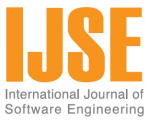Vol 10 No.2
Papers
ABSTRACT Agile methodology has become more popular in small size software organizations and many case studies and best practices taking the advantage of agile principles have been presented. Research for developing effective methods which make it possible to achieve continuous process capability improvement complying with CMMI in small size software organizations is being continued. In this paper we propose an organization structure where a Process Manager and Process Management Supporters play important roles in organizational-level processes. Case studies are presented to demonstrate the effectiveness of the proposed method.
ABSTRACT Traditional way of optimizing regression testing cost is to reduce subsets of test cases from a test suite without compromising the test requirement. In order to reduce the test suite, researchers have presented various test-suite reduction techniques using coverage metrics and greedy search algorithms. Besides greedy algorithms, optimization-based algorithms have played a major role in test suite reduction. Accordingly, we developed a new optimization algorithm called, TBAT algorithm to handle the diversity problem in generating new solutions while finding the optimal test cases. Here, a fitness function is developed to select the test cases optimally through the TBAT algorithm using two constraints, satisfying the entire test requirement and minimizing the cost measure. The proposed TBAT algorithm is experimented with five programs from SIR using four different evaluation metrics. The empirical study on the performance of the TBAT algorithm is analyzed with various parameters and the comparison is done with the greedy–based algorithm and the Systolic Genetic Search (SGS) algorithm. The experimental outcome showed that the proposed TBAT algorithm outperformed the existing algorithm in reaching the minimal cost requirements.
ABSTRACT Unified Modelling Language (UML) is the most popular modelling language use for software design in software development industries in which class diagram is being the most frequently used diagram. Despite the popularity, UML is being affected by inconsistency problems of its diagrams at the same or different abstraction levels. To address inconsistency in UML, this research has specified twenty-four abstraction rules of class’s relation semantic among any three related classes of a refined class diagram to semantically equivalent relations of two of the classes using a logical approach. This research has also formalized three vertical semantic consistency rules of a class diagram refinement identified by previous researchers using a logical approach and the set of formalized abstraction rules. The results were successfully evaluated using hotel management system and passenger list system case studies and were found to be reliable and efficient.
